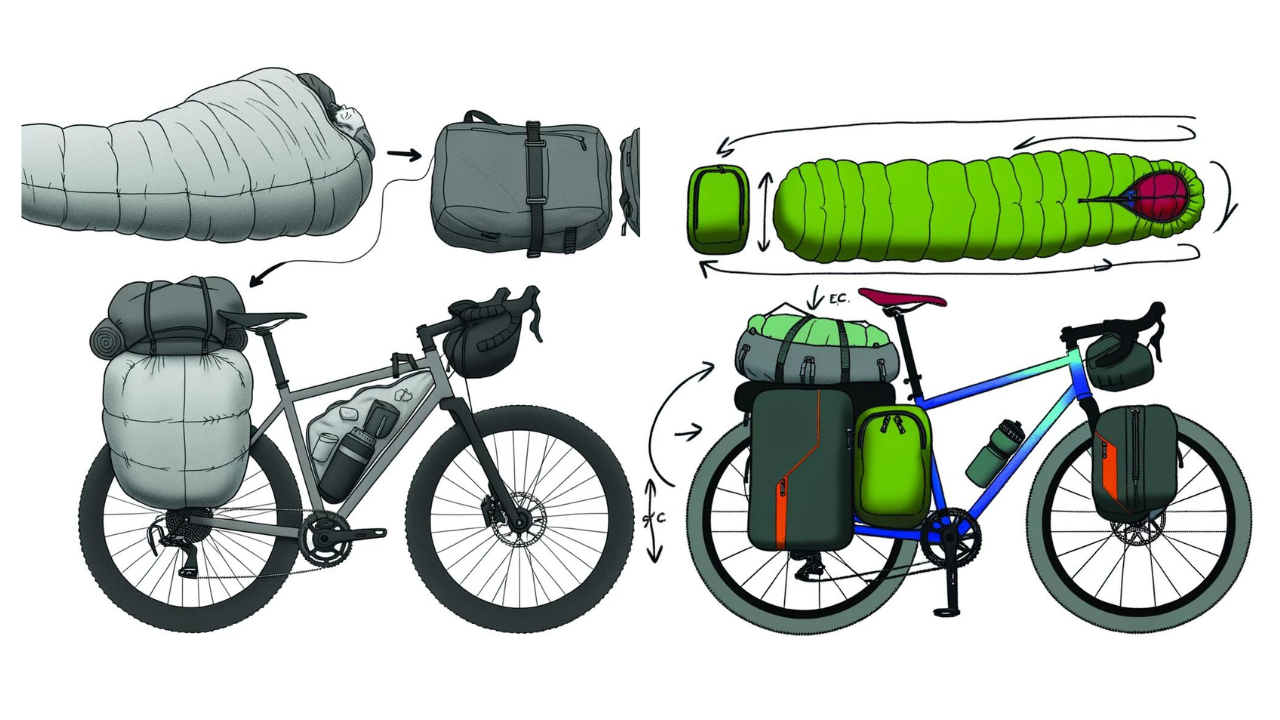Updated: 15th Feb 2024
Packing your gear for a bikepacking adventure presents a unique challenge, especially when it comes to finding the perfect spot for each item. Through experience, you learn to optimize space and ensure everything finds its place.
A common dilemma is where to store your sleeping bag on a bikepacking bike. My preferred solution is utilizing a saddle bag or seat bag, omitting the compression sack. This strategy allows you to compress the sleeping bag further into the bag, maximizing space.
If you’re new to the bikepacking scene and wondering how to efficiently pack a sleeping bag alongside your gear, you’ve come to the right place. Coming from a touring background, where space is less of an issue thanks to panniers, transitioning to a bikepacking setup required some adjustment. Packing a sleeping bag in a pannier is straightforward, but bikepacking setups demand a more thoughtful approach due to limited space.
This article aims to inspire and offer new ideas for packing your sleeping bag for both short overnight trips and extended adventures. Just like my previous popular article, “Where should I store my tent Bikepacking?“, I’ll explore various methods for packing your sleeping bag.
For bulky yet lightweight items like sleeping bags, the best storage options are either a saddle bag or handlebar bag. Overloading these bags with heavy items can affect your bike’s handling, so it’s crucial to balance weight distribution. Ideally, pack your sleeping bag without its stuff sack to conserve space. However, if your bags aren’t waterproof, consider using a waterproof dry bag for added protection.
Filling the saddle bag with your sleeping bag first, pushing it down to the base, helps utilize the bag’s shape efficiently. This also allows room for additional items, such as clothes or a sleeping pad. You might even dedicate the saddle bag for camp-specific gear, minimizing the need to unpack unnecessary items.
After a week of bikepacking, you’ll find a packing routine that suits you best. For bags prone to swaying, placing heavier items near the seatpost can offer stability. My go-to bag, which doesn’t sway, is a testament to finding gear that suits your needs.
For an alternative to traditional bikepacking saddle bags, consider Carradice’s The Camper Longflap. Budget-conscious riders might opt for a dry bag strapped to the handlebars, secured with Sea to Summit Stretch Loc Straps—a highly effective and economical solution.
In search of a sleeping bag tailored for bikepacking? Don’t miss our article on the best sleeping bags for your adventure.

